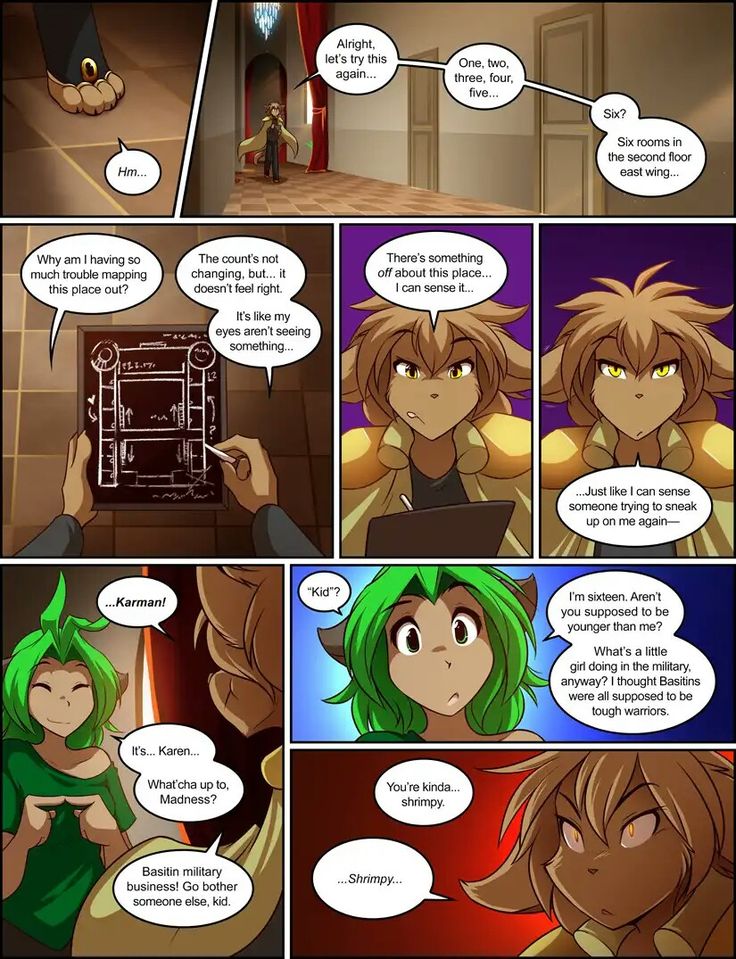Six month old milestones
Your baby's developmental milestones at 6 months
Explainer
Everything you need to know about your growing 6-month-old.
UNICEF
At 6 months, your baby will start using sounds to express emotion. She/he may mimic sounds she/he hears, like "ma,” “da,” “ah,” “oh" and even "no!" Your little one will begin to recognize familiar faces, reach and grasp for toys and will soon be crawling — start preparing your home (and yourself) for a mobile child!
Get ready by removing any sharp, breakable or electric objects from the child’s reach, locking closets with dangerous liquids or supplies (or putting them in a safe place far out of your child’s reach), and closing windows to ensure your child’s safety.
| Social and emotional |
| Language and communication |
| Brain development |
| Movement and physical development |
| Food and nutrition |
| Things to look out for |
| Tips and resources |
| < Back to Parenting Milestones |
Social and emotional milestones at 6 months
Some of the ways you’ll see your little one learning to connect with the people around him at 6 months:
- Is usually happy and responds to the emotions of others.
- Starting to differentiate between familiar faces and strangers.
- Enjoys playing with you and others.
- Has fun looking at himself in a mirror.
Tips for parents
- Talk to your baby about what is going on around him in a sweet tone.
- Include a child-friendly or plastic mirror with his toys so he can watch his movements.
- Start playing more body games like peek-a-boo.
Language and communication milestones at 6 months
How your baby is expressing her needs:
- Will recognize and respond to her name.
- Puts vowel sounds together and likes taking turns saying them with you. She is starting to make some consonant sounds, too.
- Will respond to noises by making sounds.
- Is making sounds to show positive and negative emotions.
Tips for parents
- Engage in playful conversations with your baby: Create a serve-and-return interaction by repeating back to her the sounds she makes.

- Familiarize your baby with her name by using it frequently.
Brain development milestones at 6 months
How your child’s brain is growing:
- He is curious: He looks at objects nearby and tries to grab ones that are out of reach.
- He passes things from one hand to the other and brings his hands to his mouth.
Tips for parents
- Provide your baby with toys that are easy to pick up with one hand.
- Have conversations with your baby about different objects he is putting into his mouth.
Movement and physical development milestones at 6 months
How she’ll move through her environment:
- Is starting to be able to sit without a support.
- Is rolling over in both directions.
- Will push down on her legs when her feet are on a hard surface.
- Rocks back and forth.
Tips for parents
- Leave her favourite toys nearby so she can reach them by rolling over.

Food and nutrition milestones at 6 months
What mealtimes look like at 6 months:
- Is showing an interest in food and opens his mouth when spoon fed.
- Is moving food from the front to the back of his mouth when he chews.
- Is starting to eat cereals and single-ingredient pureed foods like carrots, sweet potato and pears.
Tips for parents
- At 6 months, your baby needs more than breastmilk alone. Start giving him just 2 or 3 spoonfuls of soft food four times a day.
Things to look out for
While all babies develop differently, you should speak to your paediatrician immediately if your 6-month-old:
- Doesn’t show affection to parents or caregivers.
- Won’t respond to nearby sounds.
- Doesn’t laugh.
- Has a hard time getting things into her mouth.
- Doesn’t make vowel sounds.
- Seems too floppy or too stiff.

- Can’t roll over in either direction.
- Doesn’t attempt to grab objects nearby.
True or False?
Loading...
Explore age groups
2 Months | 4 Months | 6 Months | 9 Months | 1 Year | 18 Months | 2 Years
< Back to Parenting Milestones
Baby Development: Your 6-Month-Old
Written by WebMD Editorial Contributors
You may find it hard to believe, but you’ve made it halfway through your infant’s first year! In just six short months, your baby has started to learn how to communicate and to eat solid foods.
This portion of WebMD’s month-by-month guide provides a few of the baby milestones you can expect your child to achieve in the sixth month.
Sixth Month Baby Milestones: Growth
During the first few months of life, your baby was growing at a rate of about 1 ½ to 2 pounds a month. By now, they should have at least doubled their birth weight. At six months, baby’s growth will slow to about 1 pound a month. Height gain will also slow, to about a half-inch each month.
By now, they should have at least doubled their birth weight. At six months, baby’s growth will slow to about 1 pound a month. Height gain will also slow, to about a half-inch each month.
Sixth Month Baby Milestones: Motor Skills
Your baby may be starting to sit up alone by six months. To get ready, babies first prop themselves up with their hands, but over time they can start to let go and sit unsupported.
Your 6-month-old can probably roll from their back to their stomach and vice versa. Some babies can propel themselves around the floor using this rolling method. Or, they may creep forward or backward -- sliding around on their tummies while pushing against the floor. You may notice your baby rise up on hands and knees and rock back and forth.
Sixth Month Baby Milestones: Sleep
Most babies are sleeping six to eight hours at a stretch by six months. When babies at this age have trouble falling or staying asleep, some parents turn to a method developed by pediatrician Richard Ferber. The Ferber Method, as it is known, involves putting your baby into the crib while they are still awake. If your baby cries, wait for a progressively longer period of time each night before going in to provide comfort. This method works well for some families, but you may need to experiment with several different sleep methods before you find the one that works best for you.
The Ferber Method, as it is known, involves putting your baby into the crib while they are still awake. If your baby cries, wait for a progressively longer period of time each night before going in to provide comfort. This method works well for some families, but you may need to experiment with several different sleep methods before you find the one that works best for you.
Now that your baby can roll over independently, don’t be alarmed if you put them to sleep on their back and they wake up on their tummy. The risk of SIDS is much lower at six months than it was in the first few months of life. Still, it’s a good idea to keep stuffed animals, pillows, crib bumpers, and other soft items out of the crib for now.
Sixth Month Baby Milestones: The Senses
You may notice that your baby’s eyes have changed from their birth color. Lighter-colored eyes may go through several shifts before settling on their final shade at about six months. If your baby still has blue eyes now, chances are they’ll stay that way permanently.
The nerves in babies' mouths are much better developed than their fingertips, so placing anything -- and everything -- into the mouth can provide babies with more information than holding something. Babies may suck on their thumbs, fingers, and even their toes to soothe themselves, especially when they're hungry or tired.
Sixth Month Baby Milestones: Eating
If you haven’t started your baby on solid foods already, your pediatrician will likely recommend that you do so at six months. Begin with an iron-fortified cereal mixed with breast milk or formula. As your baby adjusts to solids, introduce pureed fruits and vegetables one at a time. Wait a few days each time you try something new to make sure they aren’t allergic to it.
If your baby doesn’t seem to like a new food, wait a few days and then try it again. Babies are fickle creatures and their tastes can change from one day to the next.
Introduce foods one at a time to be able to monitor for any reactions such as rash, diarrhea, or vomiting. According to the American Academy of Pediatrics, there is no evidence that introducing foods such as eggs and fish after 4-6 months of age increases the risk of food allergies; the AAP recommends introducing allergenic foods early in most cases. However, wait to give your baby honey until at least age 1, because it can carry the bacteria that cause botulism. Cow’s milk should also not be given until your baby is at least 1 year old, although products made with cow’s milk, such as yogurt or soft cheese, are fine.
According to the American Academy of Pediatrics, there is no evidence that introducing foods such as eggs and fish after 4-6 months of age increases the risk of food allergies; the AAP recommends introducing allergenic foods early in most cases. However, wait to give your baby honey until at least age 1, because it can carry the bacteria that cause botulism. Cow’s milk should also not be given until your baby is at least 1 year old, although products made with cow’s milk, such as yogurt or soft cheese, are fine.
Sixth Month Baby Milestones: Communication
Your 6-month-old baby should be smiling, laughing, and babbling away (“ma-ma,” “ba-ba”). To help them learn the language, read stories together every night.
Babies at this age are starting to recognize the people and things around them. Your baby will start to feel comfortable with the familiar -- mommy, daddy, grandma, and grandpa, as well as a few of their favorite toys. You might see the first signs of fear when they are with strange people or in new situations.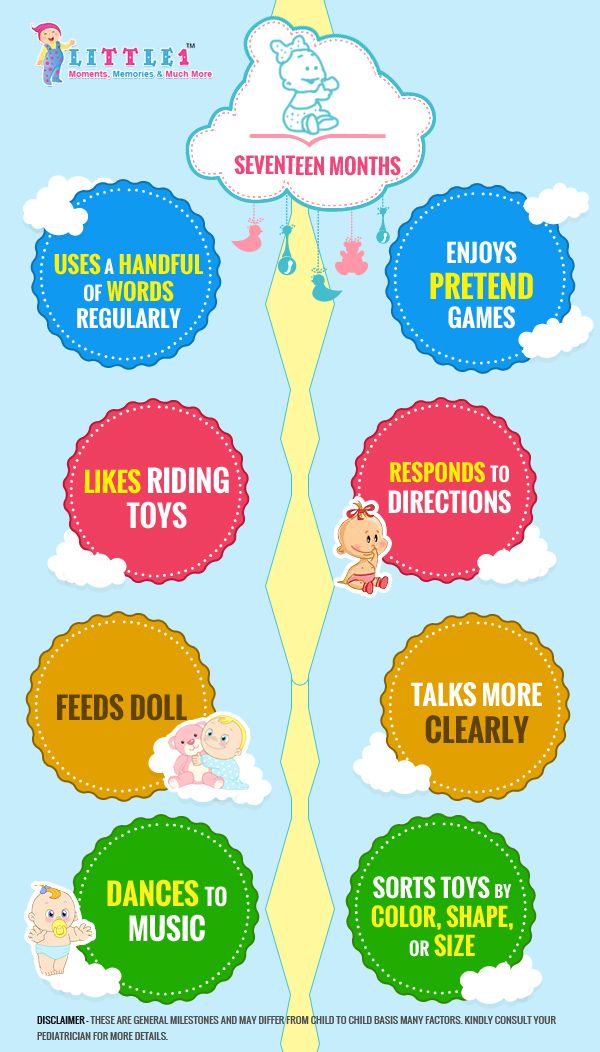
Going Back to Work
You may be lucky enough to have a friend or relative nearby to babysit. If not, here are a few tips for choosing a safe and trustworthy childcare provider:
- Visit several childcare centers. Spend as much time as possible at each one to get a feel for what your baby might experience there. If you’re able, drop in unannounced so you can see how the center runs when they’re not prepared for a visit.
- Check to make sure that the facility provides a clean, safe environment. There should be no obvious safety hazards -- such as dangling cords, open outlets, or small toys -- and emergency procedures should be clearly posted.
- Ask about the ratio of staff members to children. The fewer children per staff member, the better. Each state’s requirement for licensed childcare centers varies, but most stipulate no more than three to six babies for every one childcare worker.
- Find out about the background of every person who will be watching your child.
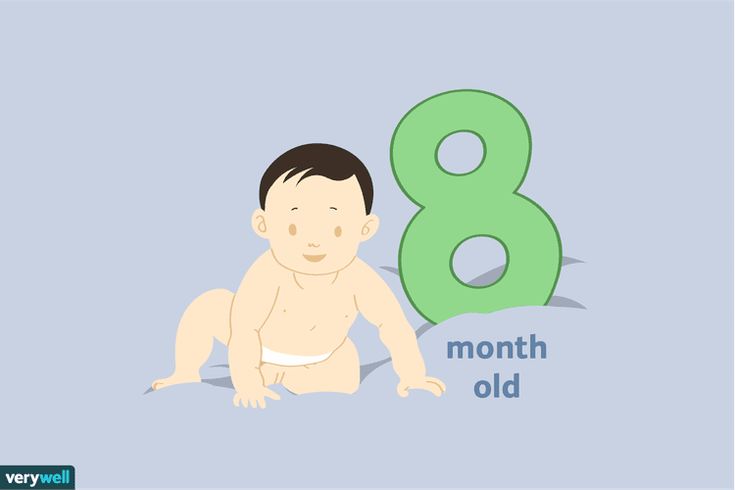 Make sure the facility conducts careful background checks of all their employees, from the childcare workers to the maintenance people.
Make sure the facility conducts careful background checks of all their employees, from the childcare workers to the maintenance people. - Ask to look at the written policies that explain when a child may or may not attend day care because of being sick, including rashes, a fever or diarrhea.
- Find out what the requirements are for vaccinations.
- Ask what foods you should provide for your baby and what foods might be supplied by the day care. If you want to supply all of your baby's food, ask if that is acceptable and what you need to provide.
Tips for Baby’s Sixth Month
- Be on the lookout for signs that your baby is not hitting important milestones, like babbling, sitting unassisted, smiling, making eye contact, or responding to sounds. If you’re concerned they have missed any milestone, call your pediatrician.
- Some babies bang their heads or rock their bodies. It's normal, provided they aren't hurting themselves or doing it for hours at a time.
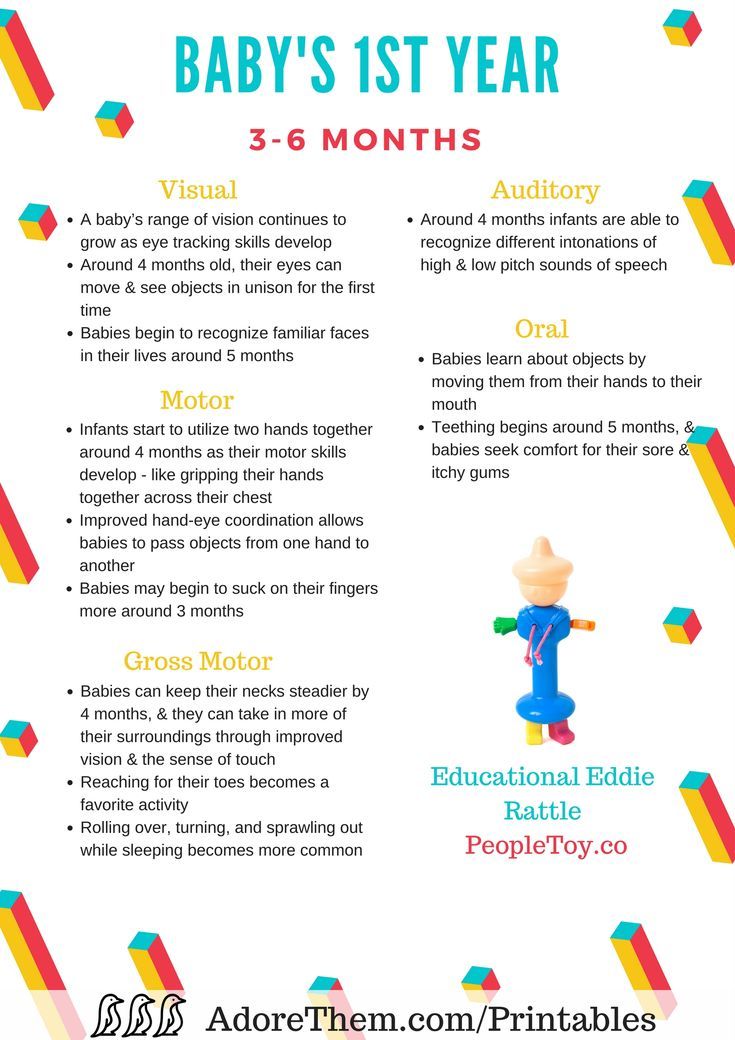
- Play peek-a-boo and similar games with your baby. It will help teach the idea of object permanence -- that objects still exist, even when they’re out of sight.
- Place toys just out of reach on the floor to encourage your baby to start crawling.
- If you have older children, make sure to put away toys with tiny pieces to prevent your baby from choking.
"Tarikh" - History of Kazakhstan - for schoolchildren | Historical milestones | Medieval Kazakhstan (7th – 18th centuries)
7th – 13th centuries
Adibaev H. The death of Otrar (Last years of Genghis Khan): Historical novel / Authoriz. per. from kaz. M. Adibaeva. - Almaty: Bilim, 1997. - 352 p.
Otrar is one of the spiritual sources of the Kazakh people, a great and tragic page in history. “... The drums of the Mongols answered the Daulpazam of Otrar - The black flag of war froze over the hill. Tyumen moved to the city. The clatter of hooves, the roar of camels, the whistle of whips over the heads of the prisoners, the roar of drums tore apart the day. Breaking duvals and roofs, stones fell, a swarm of flaming arrows shot up fiery tongues, suffocating black smoke spread over the city. The Mongols rolled in waves, threw hooks on the walls, set up ladders, lifts sheathed with oxhides and copper - the roar of manjaniks and divarkhans, the blows of wall-beating guns, howling, stomping, screams of horror merged into a single continuous roar of death ... A groan stood over Otrar. nine0012 A six-month siege of many thousands of superbly organized army was held by the Otrars. Everyone fell, stopping the further advance of Genghis Khan.
Breaking duvals and roofs, stones fell, a swarm of flaming arrows shot up fiery tongues, suffocating black smoke spread over the city. The Mongols rolled in waves, threw hooks on the walls, set up ladders, lifts sheathed with oxhides and copper - the roar of manjaniks and divarkhans, the blows of wall-beating guns, howling, stomping, screams of horror merged into a single continuous roar of death ... A groan stood over Otrar. nine0012 A six-month siege of many thousands of superbly organized army was held by the Otrars. Everyone fell, stopping the further advance of Genghis Khan.
The novel is dedicated to the grandiose campaign of the Tatar-Mongols to the West and the heroic defense of Otrar. The orbit of action includes world figures from Jesus of Nazareth, al-Farabi, Genghis Khan to Judas Iscariot. In bloody confrontations, the dramatic era, life, destinies, moral and spiritual world of the heroes are revealed.
Alimzhanov A. The return of the teacher or the story of the wanderings of Abu Nasr Mohammed, Ibn-Muhammed, Ibn-Uzlag, Al-Farabi, At-Turki.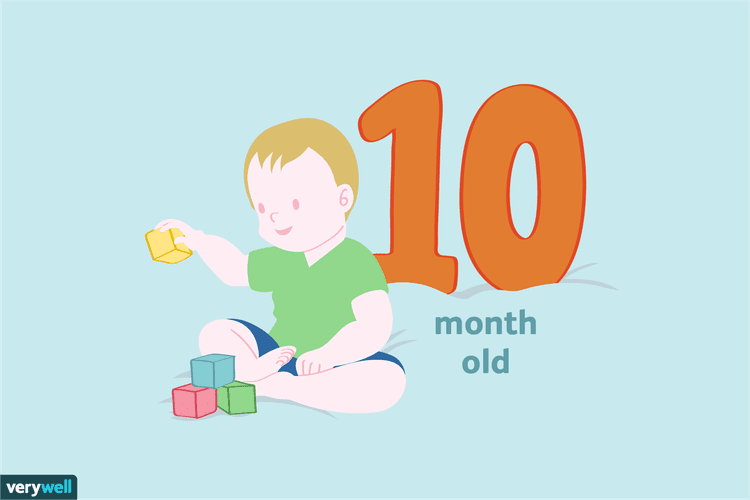 — Almaty: Aruna Ltd. - 1998. - 191 p.
— Almaty: Aruna Ltd. - 1998. - 191 p.
“An artistic depiction of history is more scientific and more true than an accurate historical description. Poetic art penetrates to the very essence of the matter, while an accurate report gives only a list of details. East. Here the great scientist and educator Abu Nasr Al-Farabi created his treatises. An eternal wanderer, walking along the roads with caravans, he absorbed all the best in the culture and history of his homeland, mastered the works of the ancient Greeks and Jews, the philosophical teachings of the Persians, Indians and Arabs, and the creations of ancient China. “... A beggar tramp, whom no one knew during his lifetime, except for a narrow circle of scientists ... "(S. Zahir), in search of what unites different peoples, not only summarized the knowledge of the ancient sages, but also laid the foundation for future discoveries. nine0005 Caravan leaves at dawn: Kazakh historical stories / Per. “… In the evenings, when the sun goes down, the sand at the place where the streets of Otrar turned crimson. Time passes, and a month appears at the edge of the sky, similar to a fragment of a curved saber. From somewhere far away comes a lingering, dreary song... The steppe is in a serene dream... ". About the death of the ancient city of Otrar, about the cruel campaigns of the lame Timur, about the enmity of two tribes and the all-conquering power of music, about the ancient methods of hunting tigers and the courageous hunter Shahan, about the mournful singer Akhan-sere and the folk hero Makhambet Utemisov, this book will tell the reader. nine0005 Kozy Korpesh - Bayan Sulu. Kozy Korpesh - Bayan sulu: Epic. - Almaty: Almatykitap. - 2007. - 128 p. “Oh, what kind of land in Sary-Arka: just touch it and grass grows. Cool wind, clear air. The peaks are so high that a hat falls off your head when you look at them. Omar A. Talisman of Tengri. - Almaty: ? basics?? rt, 2012. - 304 p. — (Zha?a zaman? debieti: prose). nine0008 The book includes stories ("The Blue Wolf", "The Wanderer from Saram", "The Talisman of Tengri", etc. This book is dedicated to the heroic past, severe trials and tireless thirst for freedom, awakening patriotic feelings and love for the Kazakh people. nine0005 Tulembaeva A.N. Firebirds of the Great Steppe: Tomiris. Aisha bibi. Borte / Art. Sh. Arykov. - Almaty: Triumph "T", 2007. - 256 p. The book about the fate of the great women of the East, who played a key role in the life of the Kazakh people - Tumar (Tomiris, VI BC), the leader of the Saks-Massagets, Aisha-bibi (presumably XI-XII centuries), who died in the name of the life of a loved one, and Borte (XII century), the wife and inspirer of Genghis Khan. So, sons, so that the work of the father Continue on without knowing the end. And for many centuries in the endless steppes Ruled over the peoples, were at the top Descendants of Genghis, her sons, 9001 laid the foundation of the branches.  from kaz. - Alma-Ata: Zhazushi, 1989. - 432 p.
from kaz. - Alma-Ata: Zhazushi, 1989. - 432 p. 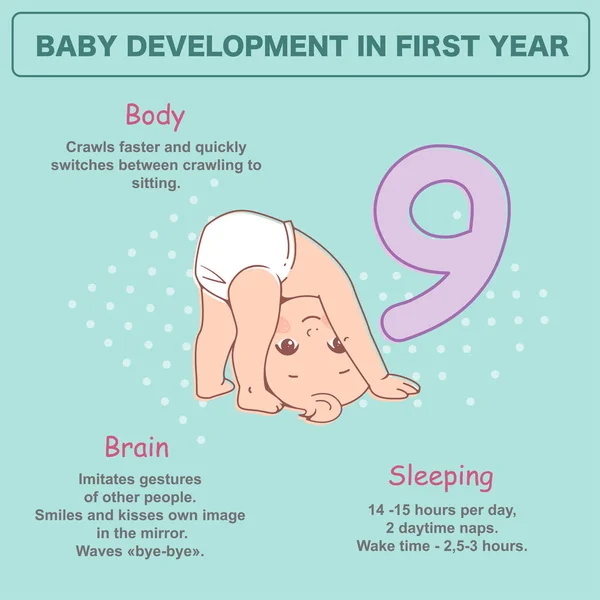 Green meadows in bloom like holiday carpets. But the most beautiful of all is the endless steppe that goes beyond the horizon! Why do people whose cattle graze together on the zhailau eat hatred and envy for each other, why do they plot evil deeds? Why shouldn't they love each other in this fleeting life as brothers, sisters, matchmakers, old people? There is enough space in this steppe for everyone…” Akyns composed their songs about the tragic love of two young people, a poem of the 13th-14th centuries tells about them. There is a lot of space in the steppe, but their love collided with merciless reality and the cruelty of ancient customs, with hatred and deceit. Treacherously killed Kozy. Not seeing the meaning of life without a loved one, Bayan dies. Only the mazar was left to the descendants as a bright symbol of eternal love.
Green meadows in bloom like holiday carpets. But the most beautiful of all is the endless steppe that goes beyond the horizon! Why do people whose cattle graze together on the zhailau eat hatred and envy for each other, why do they plot evil deeds? Why shouldn't they love each other in this fleeting life as brothers, sisters, matchmakers, old people? There is enough space in this steppe for everyone…” Akyns composed their songs about the tragic love of two young people, a poem of the 13th-14th centuries tells about them. There is a lot of space in the steppe, but their love collided with merciless reality and the cruelty of ancient customs, with hatred and deceit. Treacherously killed Kozy. Not seeing the meaning of life without a loved one, Bayan dies. Only the mazar was left to the descendants as a bright symbol of eternal love.  ), based on the events of our history, the plots of the Kazakh epic and ancient Turkic mythology. This is a fusion of stylization of ancient Turkic mythology and political history, smoothly flowing and intertwining with the mythology and history of our country in the 20th century (“Two Blades”, “Black Snow of December”, etc.).
), based on the events of our history, the plots of the Kazakh epic and ancient Turkic mythology. This is a fusion of stylization of ancient Turkic mythology and political history, smoothly flowing and intertwining with the mythology and history of our country in the 20th century (“Two Blades”, “Black Snow of December”, etc.).  By the power of her love, Aisha saves Karakhan: “I am so infinitely happy that I could save you.” My love. you will live happily ever after. So the Almighty told me." And Borte, being the wife of Genghis Khan, gave him nine children and was able to raise them with dignity: “...To absorb strength and mind with milk into them,
By the power of her love, Aisha saves Karakhan: “I am so infinitely happy that I could save you.” My love. you will live happily ever after. So the Almighty told me." And Borte, being the wife of Genghis Khan, gave him nine children and was able to raise them with dignity: “...To absorb strength and mind with milk into them,
Sanbaev S. And the eternal battle!..: A Tale / Sanbaev S. White aruana. - Alma-Ata: Zhazushi, 1969. — P.5–39
“Time has preserved legends for us. And bright, and sad, and sad…” This story-parable is a lofty poetic story about the heroic struggle of the Kazakh clans against the Mongol invasion. “... The Mongols attacked suddenly. There were not so many of them, but they marched in a single mass and without a cry, confidently hitting the Kipchaks, who rushed at them in despair. <... > Encountering no more obstacles, the Mongols' cavalry went in a formidable avalanche to the villages, awaiting their death ... ". nine0012 These are historically reliable pages from the life of the ancestors of the Kazakh people during the period of the beginning of the collapse of ancient traditions, the crisis of the centuries-old ideal of a professional Kipchak warrior, such as the Uil batyr Botakan, the leader of the Karakipchaks. “The Kipchaks have become unlike their former warriors,” Botakan explained at the council. “Only those who swore not to breed livestock, so as not to humiliate their relatives by working for themselves, and despised wealth, those who learned to fight from childhood, were like wolves!” They won the victory with their skill and courage… Only half of the troops returned…”.
“... The Mongols attacked suddenly. There were not so many of them, but they marched in a single mass and without a cry, confidently hitting the Kipchaks, who rushed at them in despair. <... > Encountering no more obstacles, the Mongols' cavalry went in a formidable avalanche to the villages, awaiting their death ... ". nine0012 These are historically reliable pages from the life of the ancestors of the Kazakh people during the period of the beginning of the collapse of ancient traditions, the crisis of the centuries-old ideal of a professional Kipchak warrior, such as the Uil batyr Botakan, the leader of the Karakipchaks. “The Kipchaks have become unlike their former warriors,” Botakan explained at the council. “Only those who swore not to breed livestock, so as not to humiliate their relatives by working for themselves, and despised wealth, those who learned to fight from childhood, were like wolves!” They won the victory with their skill and courage… Only half of the troops returned…”.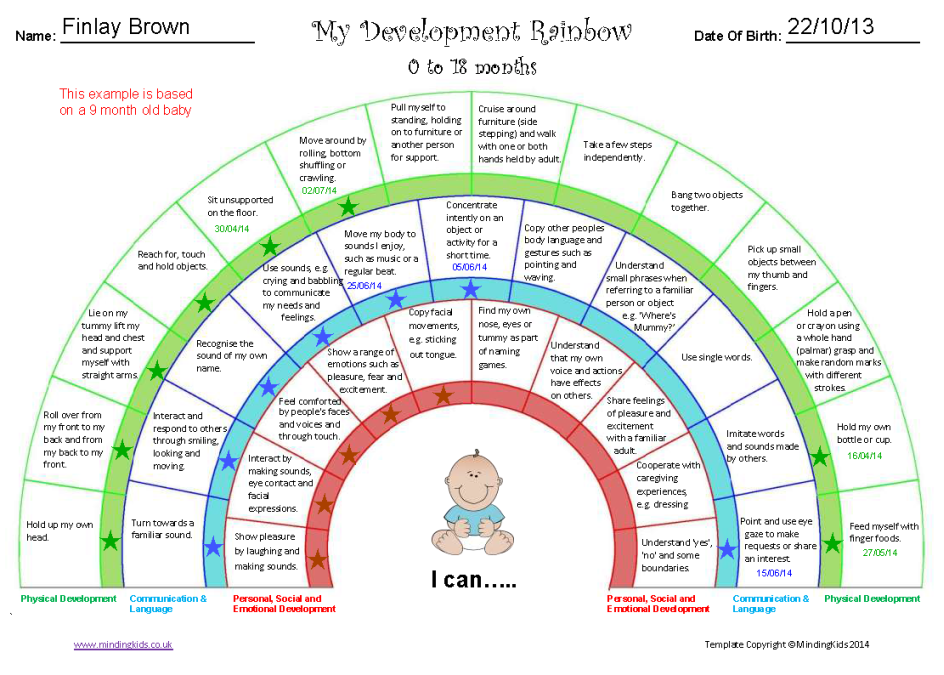 nine0012 The main conflict of the story takes place between the leader Botakan, who realizes the cruel necessity of the battle for his homeland, and a mother who does not want to send her sons to death. The conflict is resolved when the old woman Samiga finds the dying Botakan on the battlefield among the fallen in an unequal battle with the Mongols, washes his face and admonishes him into oblivion with a confession: “You were right, Botakan! <…> You are the happiest warrior. During your lifetime, glory about you thundered, when trouble came, you died and did not see the death of the villages ... <... > You died and will lie in the land of your ancestors ... "
nine0012 The main conflict of the story takes place between the leader Botakan, who realizes the cruel necessity of the battle for his homeland, and a mother who does not want to send her sons to death. The conflict is resolved when the old woman Samiga finds the dying Botakan on the battlefield among the fallen in an unequal battle with the Mongols, washes his face and admonishes him into oblivion with a confession: “You were right, Botakan! <…> You are the happiest warrior. During your lifetime, glory about you thundered, when trouble came, you died and did not see the death of the villages ... <... > You died and will lie in the land of your ancestors ... "
Shakhanov M. Otrar poem about the defeated winner, or Genghis Khan's miscalculation / Shakhanov M. Time shoots from a bow: Poems, poems / Per. from Kazakh. - M.: Soviet writer, 1988. - P. 23–33
The poem conveys the history of eight centuries ago. The city of Otrar, famous throughout the East for its richest library, outstanding scientists and poets, was destroyed by the troops of Genghis Khan.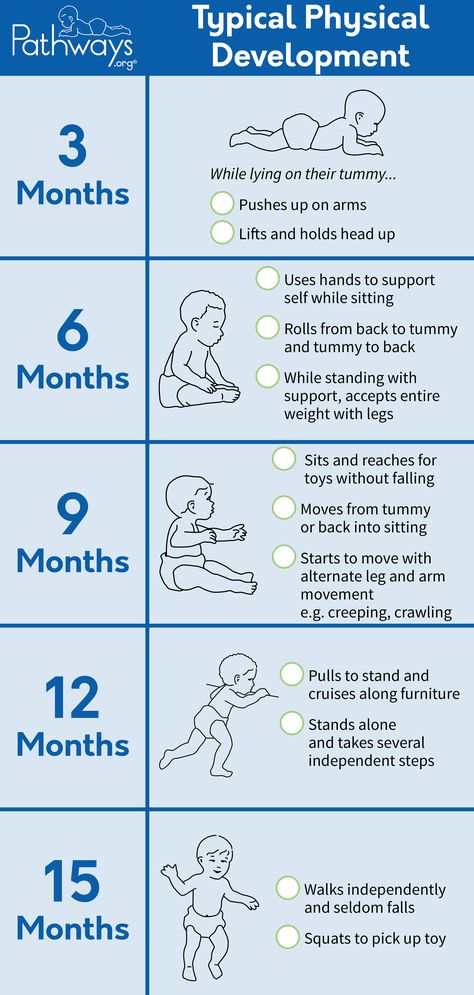 There are ruins all around, “the last poet fell in the last battle”, ashes and ashes are scattered in the steppe. But the poet thinks philosophically. If at least one child-boy survived, he will become a husband, continue the family line, will surely find a way to the past, and through the centuries the legendary city will sing, covered with a layer of sand. It can't be otherwise, "... a more reliable word and a stronger hand, since memory is rooted in the centuries."
There are ruins all around, “the last poet fell in the last battle”, ashes and ashes are scattered in the steppe. But the poet thinks philosophically. If at least one child-boy survived, he will become a husband, continue the family line, will surely find a way to the past, and through the centuries the legendary city will sing, covered with a layer of sand. It can't be otherwise, "... a more reliable word and a stronger hand, since memory is rooted in the centuries."
XIV – XVI centuries
Akhetov A. Holy Attraction of the Motherland: A Romantic Tale about Kazakhstan. - Almaty: "Asyl s?z" Baspasy, 2012. - 272 p.
The book is a romantic tale about Kazakhstan, the land of an ancient civilization with an amazing and unique history. Written in vivid figurative language, it captivates the reader from the first pages, awakening interest in the heroic pages of history, the unique culture and traditions of the people. There is nothing more precious for a Kazakh than the expanse of the steppe.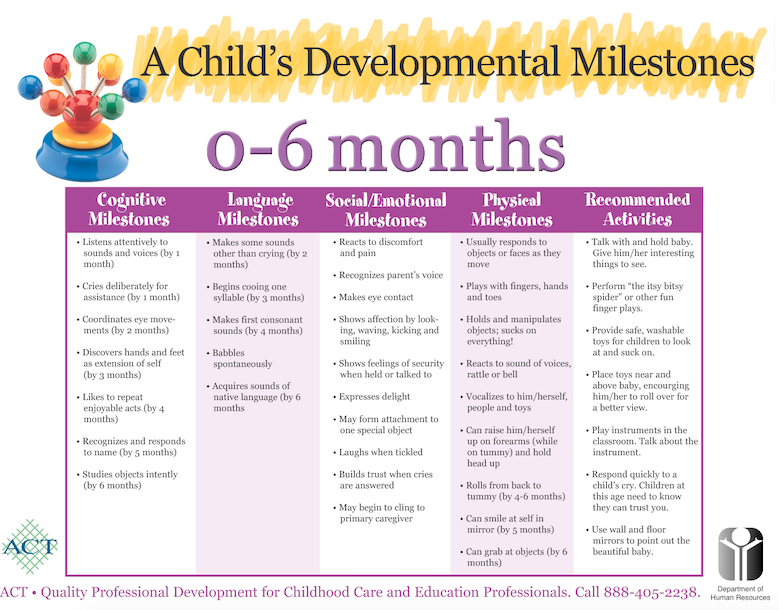 Since ancient times, the ancestors of the Kazakhs - the great nomads - became the rulers of the harsh expanses, riddled with the fractional clatter of hooves. The established nomadic way of life united tribes that had different origins, but were connected by common destinies. The steppe and nomadic culture gave rise to the Kazakh people. nine0005
Since ancient times, the ancestors of the Kazakhs - the great nomads - became the rulers of the harsh expanses, riddled with the fractional clatter of hooves. The established nomadic way of life united tribes that had different origins, but were connected by common destinies. The steppe and nomadic culture gave rise to the Kazakh people. nine0005
This book is dedicated to the heroic past, severe trials and tireless thirst for freedom, awakening patriotic feelings and love for the Kazakh people.
Bakbergenov S. Death of Temirlan: Tale: Per. from kaz. Alma-Ata: Kazakhstan; NLC "Gaklia", 1992. - 80 p.
Loud fame came to Temirlan (Timur) not immediately. Before he sat on the throne, began to redraw the map of the world, a lot of dramatic events happened in his life. This is a half-orphan wandering childhood, and an ardent love for the beautiful Elfie, and raids on merchant caravans ... Until death ambushed the great conqueror on the threshold of an empty house.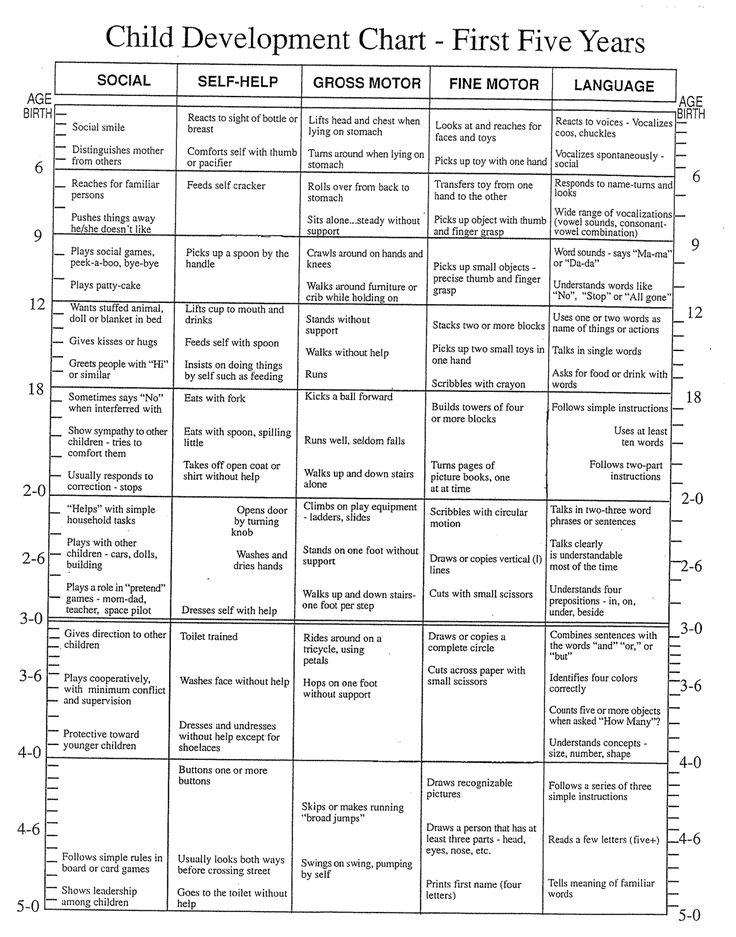 nine0011 “... Faster than the wind the news of Temir's death spread throughout the region. First of all, it reached the ears of both grandsons - Husain and Khalel, who led the two wings of his army. At the same moment, without saying a word, they rushed to Maverannahr in a race. It depended on the agility of their horses who would get the vacant throne, and each of the riders in their dreams already saw himself as an emir. And the great conqueror, once called Temir in his youth, then Lame Temir, lay sprawled on the ground, with his head to Kubla, where the sacred Mecca was located ... ". nine0012 On the land drowning in blood, the struggle for the throne began again.
nine0011 “... Faster than the wind the news of Temir's death spread throughout the region. First of all, it reached the ears of both grandsons - Husain and Khalel, who led the two wings of his army. At the same moment, without saying a word, they rushed to Maverannahr in a race. It depended on the agility of their horses who would get the vacant throne, and each of the riders in their dreams already saw himself as an emir. And the great conqueror, once called Temir in his youth, then Lame Temir, lay sprawled on the ground, with his head to Kubla, where the sacred Mecca was located ... ". nine0012 On the land drowning in blood, the struggle for the throne began again.
Beisenova Sh. Tale of one love: Novels and stories / Per. from kaz. - Astana: Audarma, 2011. - 568 p. — (“Library of Kazakh Literature”).
The heroines of historical stories are women of unique destiny, personalities who carry a moral lesson to the entire Kazakh people.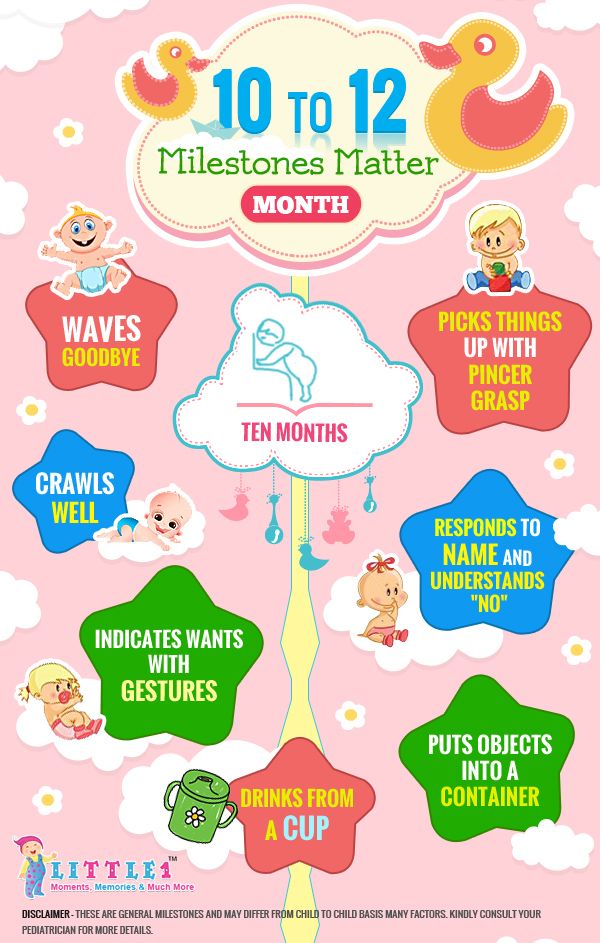 Suzge is the tragic heroine of the story “The Last Days of Suzge”, a character who has remained in the annals of history. Suzge is the younger wife of Khan Kuchum, the ruler of the Siberian Khanate, who preferred death to the shame of captivity and humiliation at the hands of the enemies who captured her fortress. Suzge's movement towards a feat is a chain of experiences, where thoughts about the homeland - Sary-Arka prevail. Her moral purity, love for her husband, and religiosity lead Suzge to a tragic death - a feat. nine0005
Suzge is the tragic heroine of the story “The Last Days of Suzge”, a character who has remained in the annals of history. Suzge is the younger wife of Khan Kuchum, the ruler of the Siberian Khanate, who preferred death to the shame of captivity and humiliation at the hands of the enemies who captured her fortress. Suzge's movement towards a feat is a chain of experiences, where thoughts about the homeland - Sary-Arka prevail. Her moral purity, love for her husband, and religiosity lead Suzge to a tragic death - a feat. nine0005
Doszhanov D. The Silk Road: A Novel / Per. from kaz. — M.: Sov. Writer, 1980. - 343 p.
"... Silence and peace now reigned in the world, but it was a deceptive silence, tense, before a thunderstorm, silence before a terrible disaster, inexorably approaching from the east. Although they embraced chest to chest with the Mongol ambassador, and opened for their merchants The Silk Road, however, every day alarming rumors came from the ground. <…> The khan involuntarily thought, tortured himself: “What is attractive for the enemy in Otrar?” And then he thought about books, about the secrets hidden in them, about priceless creations of the human mind... He was drawn there, he wanted to see with his own eyes that this great wealth of Otrar was in place ...0012 The novel tells about the dramatic events that took place in the ancient country of the Kipchaks Desht-i-Kipchak during the invasion of Genghis Khan, about the tragic fate of the capital of the Kipchak state - the city of Otrar, which resisted the onslaught of foreigners, about the famous Otrar library, about scientists and architects. "And the Great Silk Road gradually overgrown with grass. At first beaten, with a touch of salt, the road was still gray from afar, involuntarily beckoning to itself. <... > But little by little it darkened, ... then it turned into a sad orphaned path. There was a barely noticeable trace - a blue silk thread. The rumblings of past events have died down.
<…> The khan involuntarily thought, tortured himself: “What is attractive for the enemy in Otrar?” And then he thought about books, about the secrets hidden in them, about priceless creations of the human mind... He was drawn there, he wanted to see with his own eyes that this great wealth of Otrar was in place ...0012 The novel tells about the dramatic events that took place in the ancient country of the Kipchaks Desht-i-Kipchak during the invasion of Genghis Khan, about the tragic fate of the capital of the Kipchak state - the city of Otrar, which resisted the onslaught of foreigners, about the famous Otrar library, about scientists and architects. "And the Great Silk Road gradually overgrown with grass. At first beaten, with a touch of salt, the road was still gray from afar, involuntarily beckoning to itself. <... > But little by little it darkened, ... then it turned into a sad orphaned path. There was a barely noticeable trace - a blue silk thread. The rumblings of past events have died down. From the depths of centuries, the echo of the past, the muffled call of the ancestors, was barely heard. The strings of the ancient dombra have fallen silent. The long tale about Otrar ended... "
From the depths of centuries, the echo of the past, the muffled call of the ancestors, was barely heard. The strings of the ancient dombra have fallen silent. The long tale about Otrar ended... "
Esenberlin I. Nomads: Historical trilogy. — M.: Sov. writer. - 1978. - 720 p.
The trilogy "Nomads" includes historical novels - "The Enchanted Sword", "Despair", "Khan Kene", published at different times. This is a broad epic canvas that recreates the history of the Kazakh people from the 15th century to the middle of the 19th century. The trilogy shows the process of unification of the Kazakh tribes after the collapse of Timur's empire, the struggle against foreign invaders, the annexation of Kazakhstan to Russia, the hard life of the Kazakh people, suffering from the double oppression of the tsarist autocracy and local feudal lords. Against the backdrop of complex historical processes, Chingizid Khan Abulkhair of the steppe, smart and cruel Ablai, the last Kazakh Khan of Kenesary, glorious batyrs, wise Bukhar-zhyrau and many other images of figures of Kazakh history pass before the readers. " nine0011 Analysis and comprehension of the centuries-old history of the Kazakh nation, according to Anuar Alimzhanov, are impossible and incomplete without a careful look at the pages of I. Esenberlin's trilogy "Nomads".
" nine0011 Analysis and comprehension of the centuries-old history of the Kazakh nation, according to Anuar Alimzhanov, are impossible and incomplete without a careful look at the pages of I. Esenberlin's trilogy "Nomads".
Yesenberlin I. "The Charmed Sword": Historical novel-chronicle / Per. from kaz. - M .: Mol. guard, 1974. - 303 p.
The novel-chronicle is dedicated to an extremely difficult period in the life of the Kazakh people. The tumens of Genghis Khan swept through the Kazakh steppe like a bloody tornado, swept away the ancient cities and camps. The novel traces the complex processes of the revival of the Kazakhs in the XIV-XV centuries and the consolidation of Kazakh clans, which later led to the creation of a single Kazakh Khanate. nine0005
Kambar batyr=Kambar batyr (Folk Kazakh epic). - Almaty: Almatykitap, 2005. - 48 p.
Heroic epic of the 16th-17th centuries, which became a response to the cruel wars against the Kalmyks. The mighty batyr Kambar stood at the head of the Kazakhs. The bloody slaughter was terrible, in which the victory went to the Kazakhs. Kambar batyr addressed the captive Kalmyks with the following words: “There were five thousand of you when you came here to take away our lands and our wives, but we adequately met the uninvited guests, and now there are a little more than five hundred of you left. You are entirely in our power, and it costs us nothing but to execute all of you. But we won't do it. We could go to your lands and destroy them, we have enough strength for this. <…> But we will not do that either. <... > We are not greedy for someone else's good! Our homeland is our share and our happiness. All of you will return home safe and sound. Remember and know: the Kazakh land is a trap that will destroy everyone who steps on it with bad intentions. So convey my words to your kindred! Pass them on from generation to generation so that we and our descendants live in friendship and peace.
The mighty batyr Kambar stood at the head of the Kazakhs. The bloody slaughter was terrible, in which the victory went to the Kazakhs. Kambar batyr addressed the captive Kalmyks with the following words: “There were five thousand of you when you came here to take away our lands and our wives, but we adequately met the uninvited guests, and now there are a little more than five hundred of you left. You are entirely in our power, and it costs us nothing but to execute all of you. But we won't do it. We could go to your lands and destroy them, we have enough strength for this. <…> But we will not do that either. <... > We are not greedy for someone else's good! Our homeland is our share and our happiness. All of you will return home safe and sound. Remember and know: the Kazakh land is a trap that will destroy everyone who steps on it with bad intentions. So convey my words to your kindred! Pass them on from generation to generation so that we and our descendants live in friendship and peace. ” nine0012
” nine0012
Kekilbaev A. Steppe legends / Per. from kaz. A. Kim. - M .: Russian book, 2003. - 352 p. — (Year of Kazakhstan in Russia).
„…Retribution is inevitable, the one who brings evil to people will find severe punishment, and not God will punish him, but the hands of people“. The world of historical prose is cruel and tragic. Innocent blood is shed, people in a frenzy of anger and pride trample on the laws of the heart and are ready for crimes. But the tyrants leave, mercilessly washed away by the waves of time, the people remain, their soul remains, imprinted in music, stone, legend. In the novel "The End of the Legend" we learn about the legendary Timur, about the love story of a young architect and a younger khansha. The young architect, blinded by the Lord, remains immortal in his minaret, elevated into the blue Samarkand sky. And in the "Ballad of Forgotten Years" tribal enmity and hatred recede before the art of the dombra player. nine0005
nine0005
Koblandy batyr = Koblandy batyr (Folk Kazakh epic). - Almaty: Almatykitap, 2005. - 192 p.
Kazakh heroic epic of the 15th century, which tells about the struggle of the hero Koblandy, the leader of the Kypchaks, with the invaders Kyzylbass. In campaigns against Khan Kazan, Koblandy is helped by the batyrs Karaspan and Oryk, the batyrsha Karlyga, the daughter of Khan Kobikty, who saved the heroes from the khan's captivity. The mighty batyr, ready to give his life for the freedom of his people, was born for campaigns and battles: “Having tuned in to a bloody battle, Koblandy raised Tayburyl on its hind legs, and it seemed to the Kyzylbas that not a horse shot up to the sky, but a brown snake flew up like an arrow. Kyzylbass showered Koblandy with thousands of arrows, but these arrows, hitting steel chain mail <…> fell to the ground. And then, inspired by Koblandy, he rushed at the Kyzylbass with such daring that one might think: before him stood not a formidable army of forty thousand, but only forty people. A saber flashed in the sun, an arrow whistled through the air. With one blow of the saber, Koblandy cut forty, with one arrow he slew a hundred Kyzylbas. When Tayburyl, furiously gnawing at the bit, paved the way through the enemy army, piles of mutilated corpses remained behind him. Soon Koblandy knocked the Kyzylbass into one huge pile and began to shred them, like a wolf breaking into a flock of sheep. <... > Armed with whatever they could, they began to beat the hated Kyzylbas and their recent captives <... > The premonition of the long-awaited freedom seemed to increase their strength tenfold. The battle continued. Koblandy was tired, his face turned pale, his arms up to his shoulders were stained with blood. But there was nothing to think about any, even the most short-lived, respite. <... > Convinced that they could not break the Kazakh batyr, who alone scattered them over the entire area, the Kyzylbass rushed to their heels. The hour of victory has come0012".
A saber flashed in the sun, an arrow whistled through the air. With one blow of the saber, Koblandy cut forty, with one arrow he slew a hundred Kyzylbas. When Tayburyl, furiously gnawing at the bit, paved the way through the enemy army, piles of mutilated corpses remained behind him. Soon Koblandy knocked the Kyzylbass into one huge pile and began to shred them, like a wolf breaking into a flock of sheep. <... > Armed with whatever they could, they began to beat the hated Kyzylbas and their recent captives <... > The premonition of the long-awaited freedom seemed to increase their strength tenfold. The battle continued. Koblandy was tired, his face turned pale, his arms up to his shoulders were stained with blood. But there was nothing to think about any, even the most short-lived, respite. <... > Convinced that they could not break the Kazakh batyr, who alone scattered them over the entire area, the Kyzylbass rushed to their heels. The hour of victory has come0012".
Magauin M. Spring snows: Dilogy / Per. from kaz. — M.: Sov. writer, 1990. - 672 p.
Magauin M. Time of Troubles: A Historical Novel: XYI Century / Per. from kaz. - Almaty: Sanat, 1998. - 589 p.
The events of the novel-dilogue are a wide epic canvas in which the history of the Kazakh Horde, the Siberian Khanate and the Russian state unfolds against the backdrop of the events of the 16th and early 17th centuries, when the first attempts were made to establish diplomatic ties between the Kazakh steppe and Muscovy, close, friendly relations between two peoples. In the center of the story is the extraordinary fate of the real person Oraz-Mukhamed, who was a great nobleman at the court of Boris Godunov in Moscow, the ruler of the Kasimov kingdom, participated in the campaigns of the Russian army and was awarded for special services to Russia. Oraz-Mukhamed saw a lot of strife, he himself participated in them, was under observation and clouds were gathering over his head. nine0011 „… Oraz-Mukhamed put on chain mail and hung a blade on his belt. He tucked a German pistol under his belt. Loaded several muskets, unsheathed a sharp saber ... He will fight to the end, they will not get him alive. And if they set fire to it, so much the better - his body will take a noble death in the fire, and will not be thrown to the dogs. So, at the ready, he sat for exactly three days, not even taking off his weapons at night. He did not want to resort to the help of the guards - no one's blood is needed ... " But Oraz-Muhamed did not die in battle. In 1610, he was meanly killed by mercenaries. It can be seen from time immemorial that a hero accepts death from a coward, and a scoundrel destroys a brave man. nine0005
nine0011 „… Oraz-Mukhamed put on chain mail and hung a blade on his belt. He tucked a German pistol under his belt. Loaded several muskets, unsheathed a sharp saber ... He will fight to the end, they will not get him alive. And if they set fire to it, so much the better - his body will take a noble death in the fire, and will not be thrown to the dogs. So, at the ready, he sat for exactly three days, not even taking off his weapons at night. He did not want to resort to the help of the guards - no one's blood is needed ... " But Oraz-Muhamed did not die in battle. In 1610, he was meanly killed by mercenaries. It can be seen from time immemorial that a hero accepts death from a coward, and a scoundrel destroys a brave man. nine0005
17th – 18th centuries
Alimzhanov A. Messenger: A novel. - M .: Mol. guard, 1977. - 237 p.
In the spring of 1723, a hundred thousandth army of the Dzungarian Khuntaiji Tseven Rabdan invaded the territory of Kazakhstan.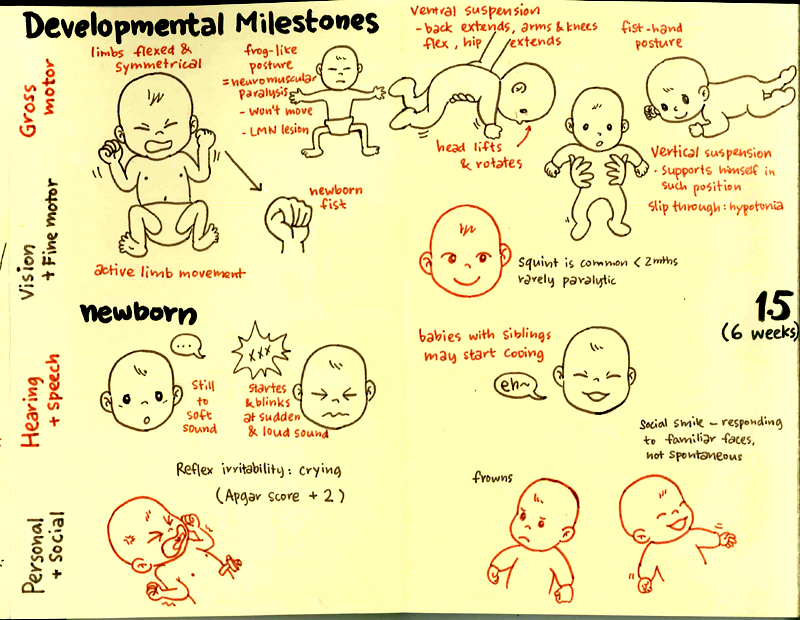 The suddenness of the attack, the presence of artillery - cannons and mortars, cast in Dzungaria by a captured Swede, cruelty helped the conquerors to penetrate deep into the Kazakh steppes. Pursued by a fierce enemy, the Kazakhs left for the banks of the Aral Sea. People go day and night0011 „… afraid to stop and rest, afraid to spend the night and sleep, afraid to fall behind each other... They leave their native land, not knowing what awaits them ahead, not knowing if they will ever be able to return back…“. The year 1723 entered the history of the Kazakhs as the “Year of Great Calamities”. But Chinese historians hastened to announce to the world that Kazakhia no longer exists, that the Kazakh people are no longer able to defend their dignity and their lands. Having gathered the militia, in 1728 the united army of Kazakh batyrs won the first victory over the Dzhungars. The victory was not easy. Strength is gone. The invaders were expelled from Semirechye, but the danger of a new invasion remained.
The suddenness of the attack, the presence of artillery - cannons and mortars, cast in Dzungaria by a captured Swede, cruelty helped the conquerors to penetrate deep into the Kazakh steppes. Pursued by a fierce enemy, the Kazakhs left for the banks of the Aral Sea. People go day and night0011 „… afraid to stop and rest, afraid to spend the night and sleep, afraid to fall behind each other... They leave their native land, not knowing what awaits them ahead, not knowing if they will ever be able to return back…“. The year 1723 entered the history of the Kazakhs as the “Year of Great Calamities”. But Chinese historians hastened to announce to the world that Kazakhia no longer exists, that the Kazakh people are no longer able to defend their dignity and their lands. Having gathered the militia, in 1728 the united army of Kazakh batyrs won the first victory over the Dzhungars. The victory was not easy. Strength is gone. The invaders were expelled from Semirechye, but the danger of a new invasion remained.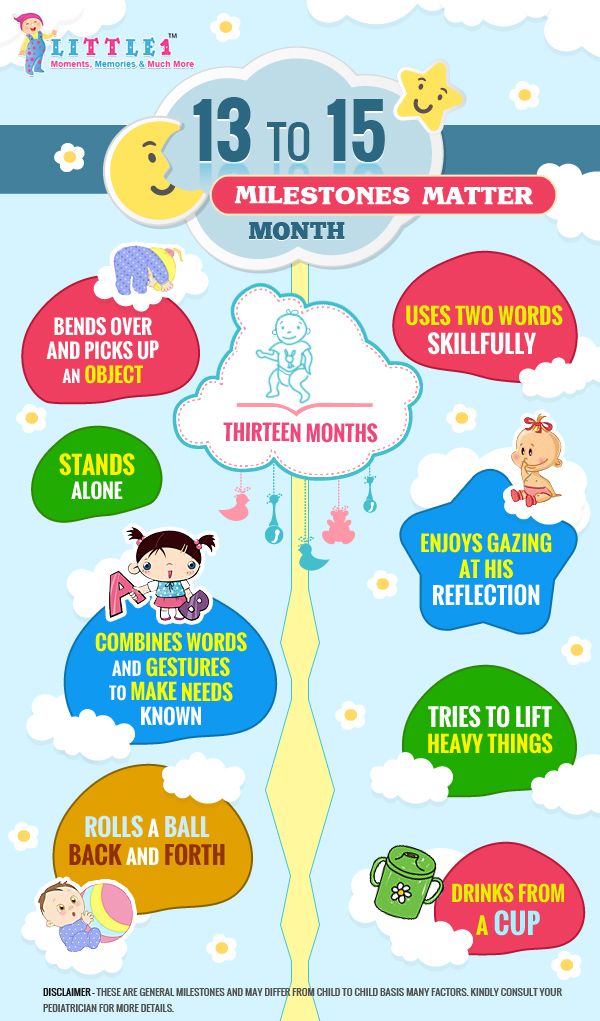 Under pressure from the masses, at the request of the elders, the Kazakh khans turned to Russia with a request for an alliance. October 10, 1731 “… following Bogenbay, Abulkhair and the batyrs, thirty elders swore allegiance to the alliance with Russia and put their tamga under the sacred Treaty…”. The novel The Messenger tells about these events.
Under pressure from the masses, at the request of the elders, the Kazakh khans turned to Russia with a request for an alliance. October 10, 1731 “… following Bogenbay, Abulkhair and the batyrs, thirty elders swore allegiance to the alliance with Russia and put their tamga under the sacred Treaty…”. The novel The Messenger tells about these events.
Yesenberlin I. Despair: Historical novel / Per. from kaz. - M .: Izvestia, 1974. - 335 p.
„ The country of the Kazakhs looked like a skinned sacrifice prepared for kokpar, the ancient goat-cutting festival. Enemies from different sides were already preparing for this bloody game... <... > And in anticipation of all this bloody confusion, someone needed to take a closer look, figure it out, determine how to survive the whole nation in all four winds of history. People's experience, wisdom, fortitude had to say their difficult weighty word. There was no doubt about where the first, most merciless player would fall from . .. ". The novel tells about the centuries-old struggle of the Kazakh people against Chinese expansion and Dzungarian invaders, pushed by imperial China; about the difficult ways of rapprochement between Kazakhstan and Russia; about the confusion sown in the steppe by Russian governors and generals sitting in fortified cities; about the glorious generals who led the troops to fight the invaders - the batyrs Kabanbai and Bogembai, the khans Abulkhair and Ablai, sung by the best poet of that era - Bukhar-zhyrau. In difficult turning points in the history of the Kazakhs, the images of these people became the banner and symbol of rebirth. nine0005
.. ". The novel tells about the centuries-old struggle of the Kazakh people against Chinese expansion and Dzungarian invaders, pushed by imperial China; about the difficult ways of rapprochement between Kazakhstan and Russia; about the confusion sown in the steppe by Russian governors and generals sitting in fortified cities; about the glorious generals who led the troops to fight the invaders - the batyrs Kabanbai and Bogembai, the khans Abulkhair and Ablai, sung by the best poet of that era - Bukhar-zhyrau. In difficult turning points in the history of the Kazakhs, the images of these people became the banner and symbol of rebirth. nine0005
Zhumadilov K. Kabanbay batyr: Historical novel-dilogue / Per. from kaz. - Astana: Audarma Book 1. - 2004. - 432 p.; Book 2. - 2006. - 504 p.
The novel tells about the life of the legendary commander, the famous batyr Karakerey Kabanbai, a participant in military campaigns during the war with the Dzungars.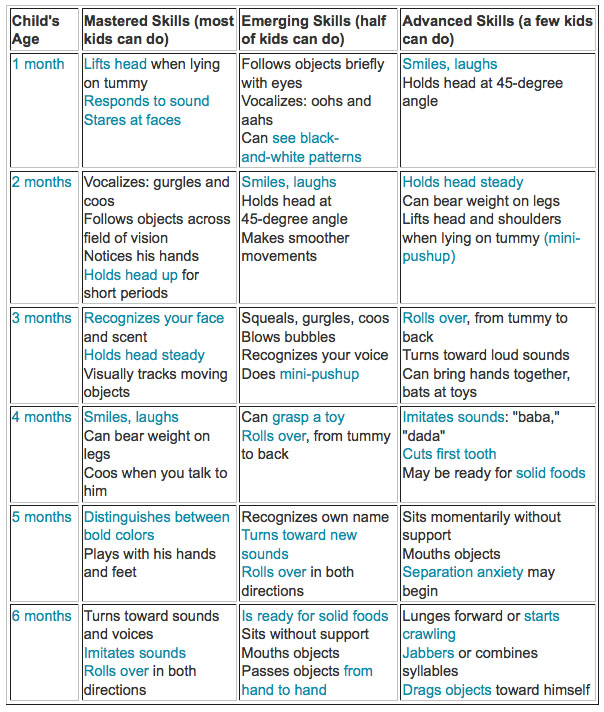 Kabanbay stood at the head of the Kazakh national liberation army and in the year of the great disaster led the defense of the sacred capital of the Kazakh Khanate - Turkestan. Over the years, the militia under his leadership won the Alakol and Shubarteniz, Ili, Shagan and Shorgin battles, Bulantin and Anyrakai battles. There were legends about the exploits of Kabanbai, prophetic singers composed legends, arnau, poems, tolgau about him. The people considered him invincible, his name was covered with glory. In addition to military campaigns, Kabanbay batyr also participated in peaceful affairs, in organizing Kazakh-Chinese trade. And in 1745 he was one of the Kazakh biys who expressed a desire to join Russia, and came out with such a request to the tsarist government, assuring Russia of their support in its struggle against the Dzungars. The novel widely reflects the domestic and foreign policy of the Horde of Khan Abylay in the 18th century, recreates the fate of many prominent batyrs, zhyrau, biys who stood next to him, being children of one time.
Kabanbay stood at the head of the Kazakh national liberation army and in the year of the great disaster led the defense of the sacred capital of the Kazakh Khanate - Turkestan. Over the years, the militia under his leadership won the Alakol and Shubarteniz, Ili, Shagan and Shorgin battles, Bulantin and Anyrakai battles. There were legends about the exploits of Kabanbai, prophetic singers composed legends, arnau, poems, tolgau about him. The people considered him invincible, his name was covered with glory. In addition to military campaigns, Kabanbay batyr also participated in peaceful affairs, in organizing Kazakh-Chinese trade. And in 1745 he was one of the Kazakh biys who expressed a desire to join Russia, and came out with such a request to the tsarist government, assuring Russia of their support in its struggle against the Dzungars. The novel widely reflects the domestic and foreign policy of the Horde of Khan Abylay in the 18th century, recreates the fate of many prominent batyrs, zhyrau, biys who stood next to him, being children of one time.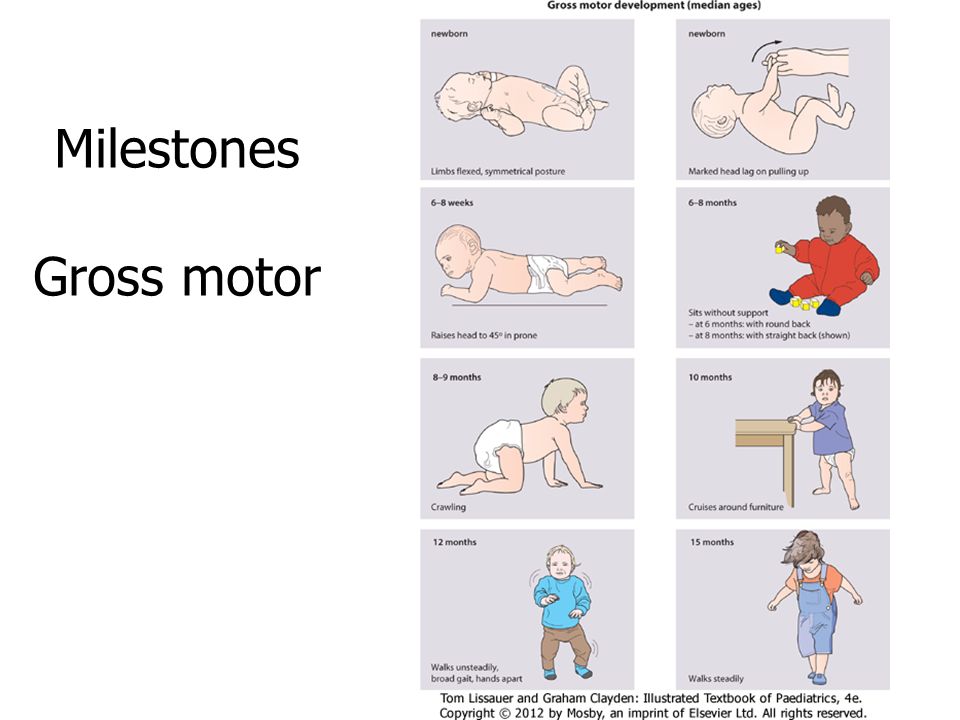 The reader opens the century-old chronicle of the entire Kazakh people, the images of people pass by, with the departure of which the era of the Kazakh horde ended, “… rushing on top of tulpars, glorifying courage and holding high her battle banner…”
The reader opens the century-old chronicle of the entire Kazakh people, the images of people pass by, with the departure of which the era of the Kazakh horde ended, “… rushing on top of tulpars, glorifying courage and holding high her battle banner…”
Kekilbaev A. The Pleiades - the constellation of hope: A novel / Per. from kaz. - Alma-Ata: Zhalyn, 1987. - 480 p.
Kekilbaev A. Flashes: Historical novel / Per. from kaz. - Alma-Ata: Zhalyn, 1991. - 570 p.
The novels present the history of the process of joining Kazakhstan to Russia, the awareness of the broad masses of the progressive political act at that time, the spiritual and cultural rapprochement of the two peoples. In complex and difficult times, relations between the Steppe and the powerful Russian state developed. nine0011 “I, the Kirghiz-Kaisak people, Khan Abulkhair, I promise and swear by the almighty God that I want and must with all my family and with all my horde <…> to be a faithful good and obedient slave and subject…” <…> Khan looked at the biys . Bees nodded in agreement. “We agree. So be it!' The Khan stepped onto the Persian carpet and knelt before the akhun. Akhun handed him the Koran with both hands. Khan accepted the Koran, touched it with his lips, put it to his forehead and returned it back. Then he got up, took out a silver khan’s seal and firmly attached it to the place of thick official paper, where Mambet-Murza helpfully poked with his finger…” - this is how this historic treaty was concluded.
Bees nodded in agreement. “We agree. So be it!' The Khan stepped onto the Persian carpet and knelt before the akhun. Akhun handed him the Koran with both hands. Khan accepted the Koran, touched it with his lips, put it to his forehead and returned it back. Then he got up, took out a silver khan’s seal and firmly attached it to the place of thick official paper, where Mambet-Murza helpfully poked with his finger…” - this is how this historic treaty was concluded.
Niyazbekov R. Zhauatar: A story / Niyazbekov R. The owner of the hearth: Stories, stories / Per. from kaz. — Alma-Ata: Zhalyn, 1985. — С.3–66
A short story tells about the time when internecine wars flared up in the Steppe. Rivalry and profit became the main thing. The tribal rich squabbled over land and livestock, these feuds helped keep the people in check. The brave batyrs turned into hounds, which were skillfully guided along the trail. In each aul there were hunters of easy prey for barymta and blood feud. Neither side sought a peaceful agreement, did not look for ways to a fair trial of multiplying grievances. Robbery raids turned into massacres, ending in the death of the right and the guilty, the old and the young, the strong and the weak. Universal hatred inflamed enmity, corrupted and weakened the Kazakh clans. Will such a people be able to defend their independence in the fight against the Dzungars, who once again attacked the steppe? Messengers rushed across the steppe, announcing the impending disaster of relatives. And batyr Zhauatar asked himself a question: “... Will these careless owners of the steppe, accustomed to counting their neighbor's cattle, be able to stand as a barrier on the enemy's path, will they be able to firmly rest their soles on their soil, feeding them and taking in their ashes? Will they be able to?.. <... > Where are they, the batyrs, who are so easy to push their foreheads together on the path between the camps? Where? Haven't they become exhausted, exhausted, haven't lost the habit of holding the stirrup to the stirrup?.
Neither side sought a peaceful agreement, did not look for ways to a fair trial of multiplying grievances. Robbery raids turned into massacres, ending in the death of the right and the guilty, the old and the young, the strong and the weak. Universal hatred inflamed enmity, corrupted and weakened the Kazakh clans. Will such a people be able to defend their independence in the fight against the Dzungars, who once again attacked the steppe? Messengers rushed across the steppe, announcing the impending disaster of relatives. And batyr Zhauatar asked himself a question: “... Will these careless owners of the steppe, accustomed to counting their neighbor's cattle, be able to stand as a barrier on the enemy's path, will they be able to firmly rest their soles on their soil, feeding them and taking in their ashes? Will they be able to?.. <... > Where are they, the batyrs, who are so easy to push their foreheads together on the path between the camps? Where? Haven't they become exhausted, exhausted, haven't lost the habit of holding the stirrup to the stirrup?.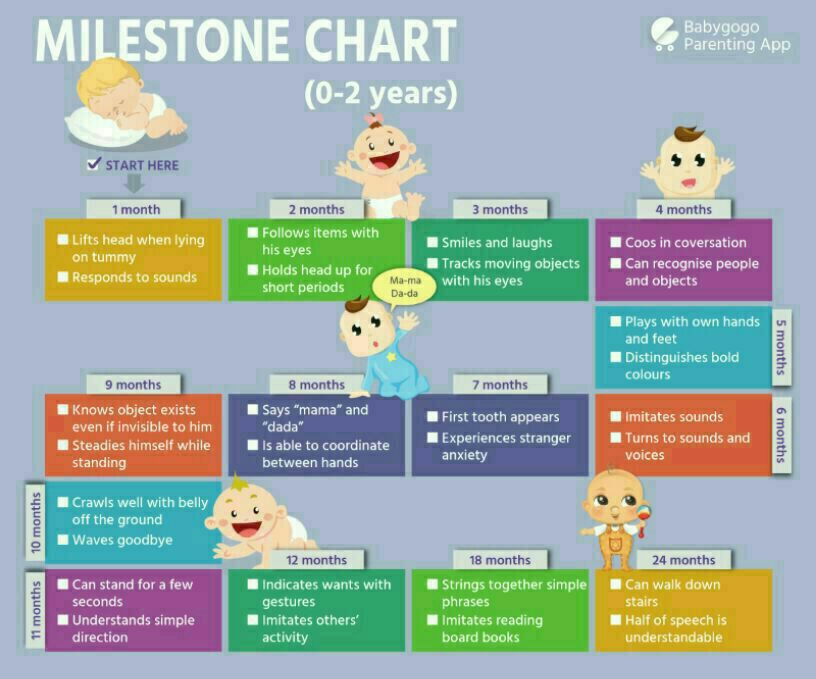 .” But not only enemies live on earth, there are also friends on it. "... Find friends on earth, stand next to them - and your son will grow up strong - without a fight, wise - without deceit, rich - without theft, kind - without an evil memory ..."
.” But not only enemies live on earth, there are also friends on it. "... Find friends on earth, stand next to them - and your son will grow up strong - without a fight, wise - without deceit, rich - without theft, kind - without an evil memory ..."
Plashevsky Yu. Khan's Ambassador: A Tale / Plashevsky Yu. Scarlet ovary: Tales and stories. - Alma-Ata: Zhalyn, 1983. - P.3–78
The story is dedicated to the events of the distant past, the annexation of Kazakhstan to Russia. On its pages, the reader will find portraits of historical figures who contributed to the rapprochement of the Kazakh and Russian peoples through their activities. In the center of the story is the image of biy Koybagar, Abulkhair's envoy to Empress Ekaterina Alekseevna. He brings good news to the khan: “Russians are reliable and strong, first they think, then they do what they say, then they keep it.” But under what conditions to go under their hand? And Abulkhair decides: "I'll tell you to go like warriors.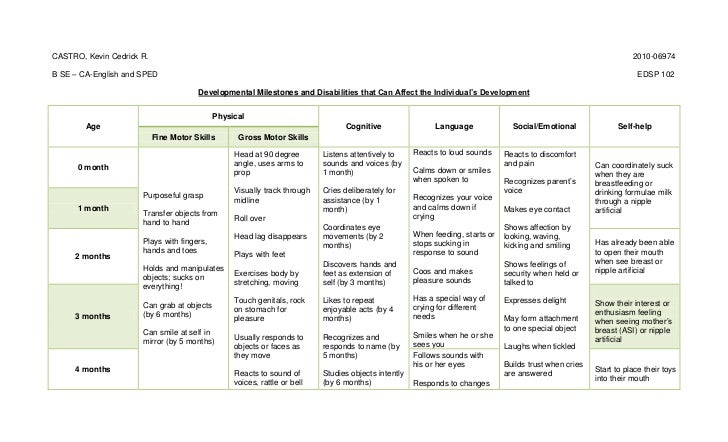 Walk like a leopard. He, and retreating, strikes. So we - to strike to the end. If those coming from the east push us against the Russians so that the Russians can see, the leopards retreat, the warriors who know honor...”
Walk like a leopard. He, and retreating, strikes. So we - to strike to the end. If those coming from the east push us against the Russians so that the Russians can see, the leopards retreat, the warriors who know honor...”
Stories about beys / Comp. and trans. G. Belger. - Astana: Audarma, 2004. - 192 p.
For centuries, biys were the intellectual and ruling elite of the Kazakh people. Their property was a natural mind, the gift of eloquence, outstanding spiritual qualities, experience and responsibility. Biys had a deep knowledge of indigenous customs and historical traditions, were a living chronicle and conscience of the people. By their lives and their deeds they proved their disinterestedness and justice. A. Alimzhanov said about the biys: “<…> They served the same god – Truth. Before their court, everyone was always equal - the rich and the poor, the khan and the shepherd. Incorruptibility gave them strength before the lords of the steppe and power over the minds of people, brought them the love of the people. The book includes stories and legends preserved in the memory of the people about the three great Kazakh biys - Tole bi, Kazybek bi and Aitek bi. In the historical consciousness of the Kazakhs, they are perceived as a triune shrine, as an inseparable unity of the people's Spirit, as the embodiment of the spiritual substance of Kazakhia. They lived and worked in the late 17th and early 18th centuries. Their wise admonitions and maxims the people kept in their memory as a treasure. nine0005
The book includes stories and legends preserved in the memory of the people about the three great Kazakh biys - Tole bi, Kazybek bi and Aitek bi. In the historical consciousness of the Kazakhs, they are perceived as a triune shrine, as an inseparable unity of the people's Spirit, as the embodiment of the spiritual substance of Kazakhia. They lived and worked in the late 17th and early 18th centuries. Their wise admonitions and maxims the people kept in their memory as a treasure. nine0005
Sataev A. They don't shoot at swans: Prose / Amantai Sataev. - Almaty: ?ainar, 2011. - 384 p. The book includes the works of the writer, written in different years: prose, historical portraits, plays. The story “They Don’t Shoot at Swans” tells about the virgin lands, about the life of the first virgin lands, about the friendship of peoples. Historical portraits feature essays and essays about famous people: Attila, Bogenbai Batyr , Chokan Valikhanov, Nikolai Vavilov and Mukhamedzhan Tynyshpaev, Magzhan Zhumabaev, Mustafa Chokaev, Khadzhimukne, and others. Historical portraits were created on the basis of documentary materials. One of the plays tells about the great Ukrainian kobzar Taras Shevchenko, who for many years was exiled to Mangyshlak as an ordinary soldier. nine0005
Historical portraits were created on the basis of documentary materials. One of the plays tells about the great Ukrainian kobzar Taras Shevchenko, who for many years was exiled to Mangyshlak as an ordinary soldier. nine0005
Sergeev AN Petersburg Ambassador: A Historical Novel. - Alma-Ata: Zhazushi, 1981. - 296 p.
The plot of the novel was an episode from the history of Kazakhstan joining Russia. In the center of the work is the mission of A. Tevkelev, the ambassador of the Russian government to the Kazakh steppe, to the headquarters of the Khan of the Younger Zhuz Abulkhair. Russian-Kazakh relations were noticeably strengthened by the end of the 30s - the beginning of the 40s of the 18th century. Many Russian missions were sent to the Steppe, which collected information about inter-clan strife and the activities of the ruling elite, the mood of the population and economic life, created conditions for free trade and unhindered passage of caravans through the Kazakh lands. Abulkhair Khan did not imagine all the long-term consequences of joining Russia. In the conditions of a difficult international situation and cruel civil strife, his task was to save his people. In addition, in the face of the tsarist administration, he sought the support of his own influence in the steppe. However, his rivalry with Sultan Barak from the Khan dynasty of the Middle Zhuz ended tragically. Returning from Orsk, where he met with the Russian ambassador A. Tevkelev, Abulkhair was killed. Tevkelev wrote in his report: “And no matter how presumptuous that Khan Abulkhair was, however, before other kaisaks, he was the first to enter Russian citizenship, brought his entire surname and almost his zhuz to us, and thus opened the way for the Horde to Russia. Therefore, I promise, neither in the Kaisak nor in the Russian people will his name be forgotten, but he will live forever!
Abulkhair Khan did not imagine all the long-term consequences of joining Russia. In the conditions of a difficult international situation and cruel civil strife, his task was to save his people. In addition, in the face of the tsarist administration, he sought the support of his own influence in the steppe. However, his rivalry with Sultan Barak from the Khan dynasty of the Middle Zhuz ended tragically. Returning from Orsk, where he met with the Russian ambassador A. Tevkelev, Abulkhair was killed. Tevkelev wrote in his report: “And no matter how presumptuous that Khan Abulkhair was, however, before other kaisaks, he was the first to enter Russian citizenship, brought his entire surname and almost his zhuz to us, and thus opened the way for the Horde to Russia. Therefore, I promise, neither in the Kaisak nor in the Russian people will his name be forgotten, but he will live forever!
Smataev S. My song is my pain: Roman / Per. from kaz. — M.: Sov. writer, 1983. - 303 p.
writer, 1983. - 303 p.
Historical narratives refer the reader to the distant past, telling about one of the most difficult periods in the life of the Kazakh steppe - 1698-1725. These years entered the history of the Kazakhs as the years of great disasters. Hundred-thousandth army of the Dzungarian Khuntaiji Tsevan-Rabdan, who repeatedly tried to establish his dominance over the Kazakhs, attacked peaceful villages, sowing death and destruction around. “... In the spring... of 1723, the Khuntaiji sent countless hordes to the Kazakh steppe - seven tumens of Oirat sheriks. He took the Kazakh batyrs by surprise. Enemies that swooped in like a black cloud occupied the valleys of the Talas and Chu rivers. The Oirats killed the famous batyrs, who were able to rouse the people to fight. Announcing the peaceful steppes with cannon fire, the invaders broke into the Kazakh cities, conquered Sairam, Tashkent, Turkestan. <…> The Kazakhs have become refugees.” nine0012 But the hour has come. The people, who did not want to die in slavery, rose to fight for the independence of their homeland. The years 1726-1729 gave true heroes who led the fight against foreign invaders. At the congress of the Kazakhs of all three zhuzes in Ordabasy, the sultans, biys and batyrs unanimously elected Abulkhair as the supreme commander of the Kazakh army. In 1729, one of the largest battles with the Dzhungars took place in the Anyrakay area. The famous batyrs Bogenbai, Kabanbai, Rayymbek stood at the head of the Kazakh militia. nine0011 “…Sarbazy! The hour of testing has come! If you are burning with the desire to stand up for your people, then the moment has come! Indecisiveness is defeat. Even if you make the enemy drown in your own blood, so be it! Don't miss a single step! May the enemy's foot never trample the wormwood of the noble steppe! …» The battle of Anyrakay turned into a crushing defeat for the Dzhungars.
The people, who did not want to die in slavery, rose to fight for the independence of their homeland. The years 1726-1729 gave true heroes who led the fight against foreign invaders. At the congress of the Kazakhs of all three zhuzes in Ordabasy, the sultans, biys and batyrs unanimously elected Abulkhair as the supreme commander of the Kazakh army. In 1729, one of the largest battles with the Dzhungars took place in the Anyrakay area. The famous batyrs Bogenbai, Kabanbai, Rayymbek stood at the head of the Kazakh militia. nine0011 “…Sarbazy! The hour of testing has come! If you are burning with the desire to stand up for your people, then the moment has come! Indecisiveness is defeat. Even if you make the enemy drown in your own blood, so be it! Don't miss a single step! May the enemy's foot never trample the wormwood of the noble steppe! …» The battle of Anyrakay turned into a crushing defeat for the Dzhungars.
Page not found – SPbF IIET RAS
Publications by 90th anniversary of IIET them.
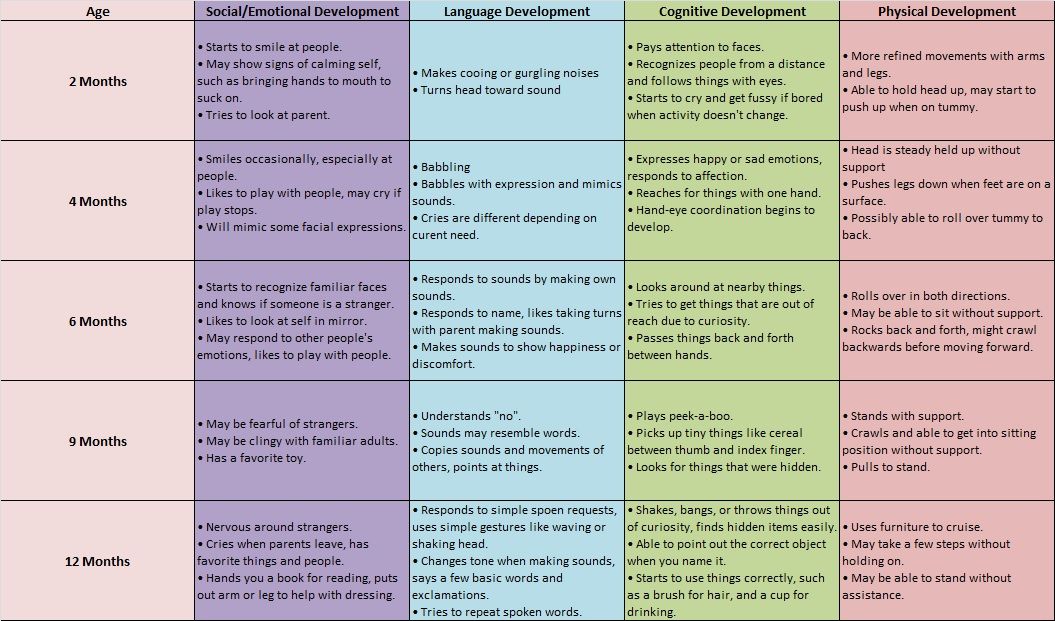 S.I. Vavilov RAS
S.I. Vavilov RAS 90th anniversary of the Institute of the History of Natural Science and Technology. S.I. Vavilov of the Russian Academy of Sciences are devoted to publications in the fourth issue of the 2022 journal "Sociology of Science and Technology" published at the Institute of Electrical Engineering and Technology of the Russian Academy of Sciences: The fourth issue of the journal "Sociology of Science and Technology" (2022) under the heading "To the 90th ANNIVERSARY OF THE INSTITUTE OF HISTORY OF NATURAL SCIENCE AND TECHNOLOGY them. S.I. VAVILOV OF THE RUSSIAN ACADEMY OF SCIENCES” opens the article ...
JOURNAL "SOCIOLOGY OF SCIENCE AND TECHNOLOGY" VOLUME 13, No. 4, 2022
The fourth issue of the journal "Sociology of Science and Technology" for 2022 ("Sociology of Science and Technology" Vol. 13, No. 4, 2022) has been published. Under the heading “To the 90th anniversary of the Institute of the History of Natural Science and Technology named after A.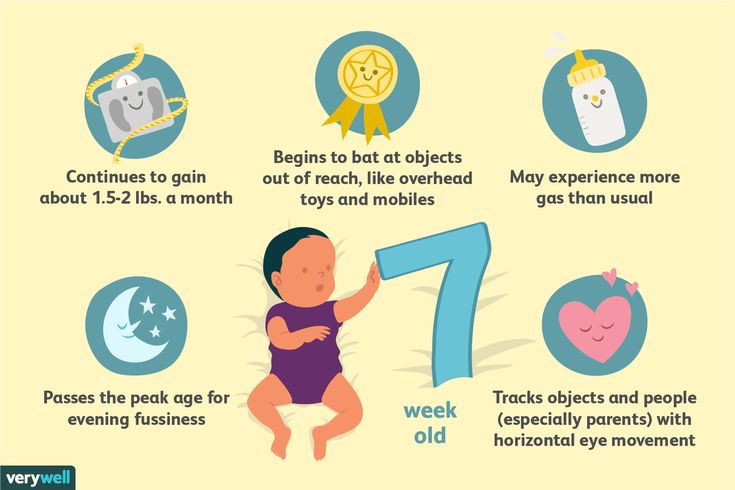 I. S.I. Vavilov of the Russian Academy of Sciences” the issue opens with an article by S.S. Ilizarov, devoted to the publication of a note by the director of the Institute of the History of Natural Science of the USSR Academy of Sciences, Corresponding Member of the USSR Academy of Sciences Khachatur Sedrakovich ...
I. S.I. Vavilov of the Russian Academy of Sciences” the issue opens with an article by S.S. Ilizarov, devoted to the publication of a note by the director of the Institute of the History of Natural Science of the USSR Academy of Sciences, Corresponding Member of the USSR Academy of Sciences Khachatur Sedrakovich ...
Collection of documents "Academy of Sciences and State Power (late 19th - first third of the 20th century)"
Academy of Sciences and State Power (late XIX - first third of the XX century): Collection of documents / Ed. E. F. Sinelnikova, V. S. Sobolev. - St. Petersburg: Scythia-print, 2022. - 182 p. The collection includes previously unpublished and little-known documentary sources from the history of relations between the Academy of Sciences and government in the late 19th — first third of the 20th century. Materials …
Meeting of the Academic Council of the SPbF IIET RAS (27.
 12.2022 at 12:00)
12.2022 at 12:00) Meeting of the Academic Council of the St. Petersburg Institute of Electronics and Technology RAS December 27, 2022 (Tuesday) at 12:00 Presentation of the Badge of Honor "For contribution to the history of science and technology". ON. Ashcheulova Report of the P.K. Kozlov. A.E. Merkulova On the results of the Scientific Conference "Soviet antiquity - VIII". A.M. Skvortsov Approval of the SPbF IIET RAS publication plan for 2023 N.A. Ashcheulova Statement ...
International Yearbook "PROBLEMS OF THE ACTIVITIES OF SCIENTISTS AND SCIENTIFIC TEAM", Issue 8 (38), 2022
The issue of the international yearbook “Problems of activities of scientists and research teams” (No. 8(38), 2022), which is presented to the reader’s attention, contains articles based on reports presented at the VIII Scientific School of Young Scientists of the Institute of Electronics and Technology RAS “Formal and Informal Institutions in the development of science. The school worked on the basis of the St. Petersburg branch of the Institute of the History of Natural Science and Technology. S.I. Vavilov of the Russian Academy of Sciences ...
The school worked on the basis of the St. Petersburg branch of the Institute of the History of Natural Science and Technology. S.I. Vavilov of the Russian Academy of Sciences ...
Thematic evening “Historical portraits: N.I. Vavilov. To the 135th anniversary of the birth of N.I. Vavilov (1887 - 1943).
December 7, 2022 in the Small Lecture Hall of the House of Scientists. M. Gorky hosted a thematic evening “Historical portraits: N.I. Vavilov. To the 135th anniversary of the birth of N.I. Vavilov (1887 - 1943), Russian and Soviet geneticist, biologist, public figure. Vavilov Nikolai Ivanovich - biologist, geneticist, chemist, geographer, public figure and statesman. The author of the doctrine of plant immunity, ...
II Congress of Young Scientists (Sochi, December 1–3, 2022)
From December 1 to December 3, 2022 in Sochi, in the Sirius Park of Science and Art, the II Congress of Young Scientists was held as part of the Decade of Science and Technology. More than 3000 specialists from 40 countries participated in the event. Among them are students, young and venerable scientists from Russia, the Republic of Belarus, Kazakhstan, China, India, Egypt, Syria, Myanmar, Uzbekistan, etc. The participants met …
More than 3000 specialists from 40 countries participated in the event. Among them are students, young and venerable scientists from Russia, the Republic of Belarus, Kazakhstan, China, India, Egypt, Syria, Myanmar, Uzbekistan, etc. The participants met …
PHOTOREPORT on the work of the conference "Soviet antiquity - VIII" (24-25.11.2022)
On November 24–25, 2022, the conference “Soviet Antiquity – VIII” was held at the St. Petersburg Institute of Ethology and Ethology of the Russian Academy of Sciences The conference was devoted to the study of the history of the ancient world in the USSR and is part of a series of events dedicated to the 300th anniversary of the Russian Academy of Sciences. The theme of the conference in 2022: "Ancient history and historians of antiquity not of our century." The conference discussed the widest range of issues and development prospects ...
Meeting of the Academic Council of the SPbF IIET RAS (08.
 12.2022 at 12:00)
12.2022 at 12:00) Meeting of the Academic Council of the St. Petersburg Institute of Electronics and Technology RAS December 8, 2022 (Thursday) at 12:00 Report of the History Sector of the Academy of Sciences and Scientific Institutions. A.Yu. Skrydlov Report of the Sector of the History of Evolutionary Theory and Ecology. A.L. Rizhinashvili Report of the Sector of Social and Cognitive Problems of Science. A.V. Kupriyanov Approval of supervisors and topics of candidate dissertations of SPbF IIET RAS postgraduate students. HER. Elkin ...
Article by Arkady Yakovlevich Sosnov “United space. The focus of science scientists is the consolidating role of the USSR Academy of Sciences" in the newspaper "Poisk"
Sosnov A.Ya. “United space. The focus of science scholars is the consolidating role of the USSR Academy of Sciences" in the newspaper "Poisk" No. 48 dated November 25, 2022.





